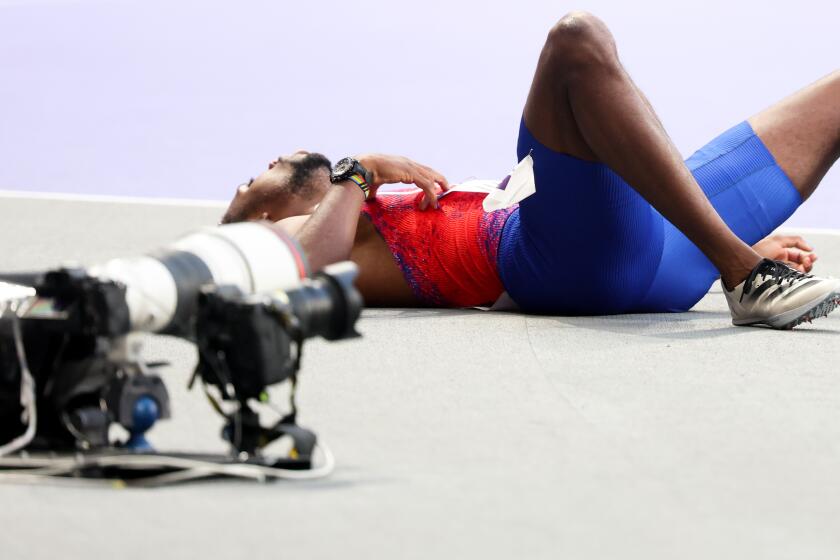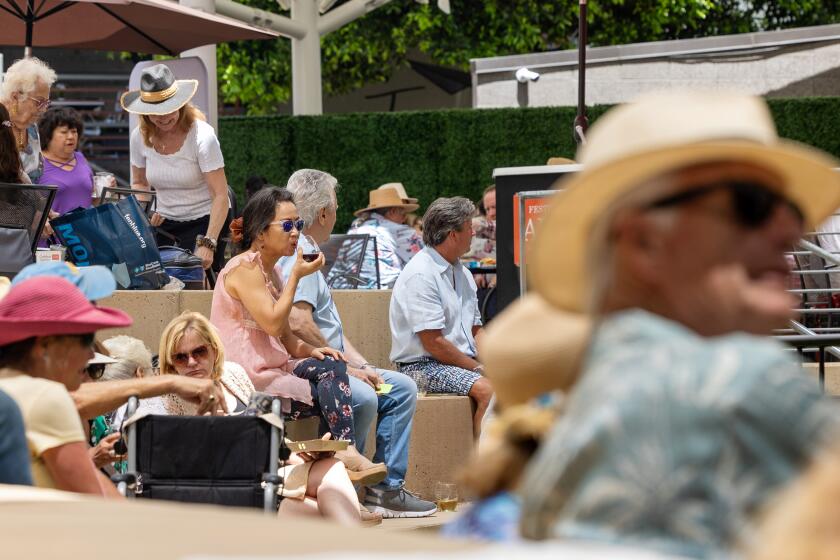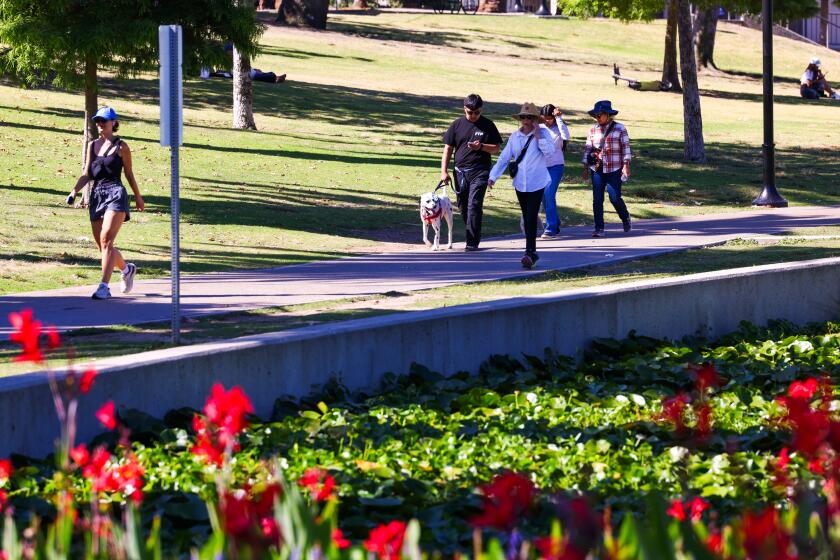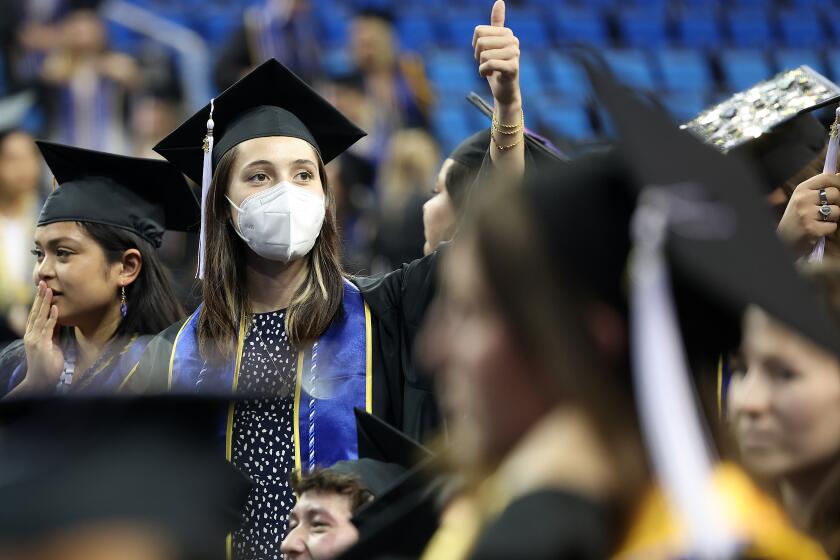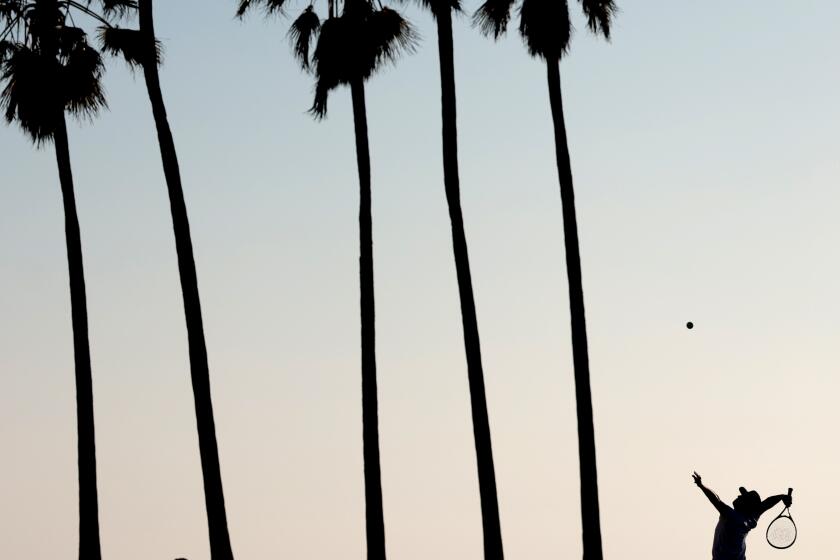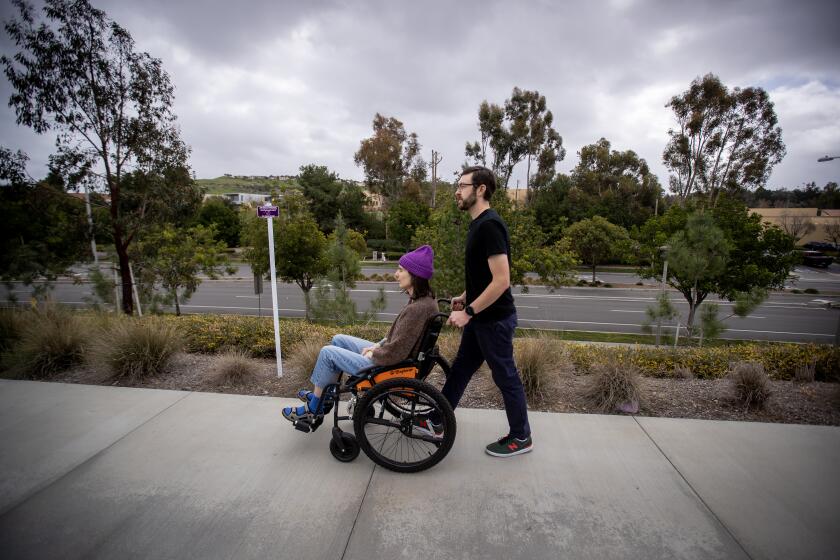This is now Californiaâs worst summer COVID wave in years. Hereâs why

Californiaâs strongest summer COVID wave in years is still surging, and an unusual midsummer mutation may be partly to blame.
There are a number of possible culprits behind the worst summer infection spike since 2022, experts say. A series of punishing heat waves and smoke from devastating wildfires have kept many Californians indoors, where the disease can more easily spread. Most adults are also well removed from their last brush with the coronavirus, or their last vaccine dose â meaning theyâre more vulnerable to infection.
But changes in the virus have also widened the scope of the surge.
Of particular concern is the rise of a hyperinfectious subvariant known as KP.3.1.1, which is so contagious that even people who have eluded infection throughout the pandemic are getting sick.
âCOVID is extraordinarily common now,â said Dr. Elizabeth Hudson, regional chief of infectious diseases for Kaiser Permanente Southern Californiaâs 16-hospital healthcare system.
Californiaâs summer COVID surge has proved to be particularly strong and enduring, as it storms to levels not seen in summertime in over two years.
COVID hospitalizations are ticking up, but remain lower than the peaks for the last two summers, probably thanks to some residual immunity and the widespread availability of anti-COVID drugs such as Paxlovid.
The World Health Organization has warned of COVID infections rising around the world, and expressed concern that more severe variants could emerge.
âIn recent months, regardless of the season, many countries have experienced surges of COVID-19, including at the Olympics,â said Dr. Maria Van Kerkhove, the WHOâs technical lead on COVID.
Among those caught up was 27-year-old American sprinter Noah Lyles, who after winning the gold in the menâs 100-meter finals, came up short Thursday during the 200-meter finals, taking the bronze. Lyles collapsed after the race, fighting shortness of breath and chest pain, and was later taken away in a wheelchair.
âIt definitely affected my performance,â he said of the illness, estimating that he felt âlike 90% to 95%â of full strength.
Noah Lyles reportedly was diagnosed with COVID on Tuesday and couldnât muster a gold-medal performance in the menâs 200 meters at the Paris Olympics.
The rate at which reported coronavirus tests are coming back positive has been rising for weeks â to above 10% globally and more than 20% in Europe. In California, the coronavirus positive test rate was 14.3% for the week that ended Aug. 5 â blowing past the peaks from last summer and winter â and up from 10% a month ago.
There were already indications in May that the typical U.S. midyear wave was off to an early start as a pair of new coronavirus subvariants â KP.2 and KP.1.1, collectively nicknamed FLiRT â started to make a splash, displacing the winterâs dominant strain, JN.1.
But by July, a descendant strain, KP.3.1.1, had clearly taken off.
âKP.3.1.1 is extremely transmissible and a little bit more immune evasive. It kind of came out of the blue during the summer,â said Dr. Peter Chin-Hong, an infectious-diseases specialist at UC San Francisco.
California is in the middle of its worst summer COVID wave since 2022, with virus levels and infections surging across the state.
Cases are up at Kaiser Permanente Southern California, and âlooking through the CDC data ... KP.3.1.1 is really what is driving this particular surge,â Hudson said. âWe are certainly much higher than we were last summer.â
Anecdotally, some infected people report being âpretty darn miserable, actually â really severe fatigue in the first two days,â Hudson said.
People may want to think their symptoms are just allergies, she said, but âitâs probably COVID. So weâre just really encouraging folks to continue to test.â
An initial negative test doesnât necessarily mean youâre out of the woods, though. Officials recommend testing repeatedly over as many as five days after the onset of symptoms to be sure.
With COVID numbers in California spiking this summer, experts are warning the new FLiRT strains driving the spread could be around for some time.
California has now reported four straight weeks with âvery highâ coronavirus levels in its wastewater, according to data released by the U.S. Centers for Disease Control and Prevention on Friday. That followed five weeks of âhighâ viral levels.
Last summer, California recorded only eight weeks with âhighâ coronavirus levels in wastewater, and never hit âvery highâ levels. In the summer of 2022, California spent 16 weeks with âhighâ or âvery highâ levels of coronavirus in wastewater.
âFewer people got immunized this year compared to last year at this time,â Chin-Hong said. âThat means, particularly amongst people who are older, theyâre just not equipped to deal with this virus.â
There are 44 states with âhighâ or âvery highâ coronavirus levels in their wastewater, according to the CDC. Five states, and the District of Columbia, have âmoderateâ levels, and there were no data for North Dakota.
The CDC said coronavirus infections are âgrowingâ or âlikely growingâ in 32 states, including California; are âstable or uncertainâ in seven states, as well as the District of Columbia; are âlikely decliningâ in Connecticut; and âdecliningâ in Hawaii and Nevada. There were no estimates in eight states.
While the numbers of coronavirus cases and hospitalizations are relatively low, the uptick is an indication of an expected summer wave, health experts say.
In Los Angeles County, coronavirus levels in wastewater jumped to 54% of last winterâs peak over the 10-day period ending July 27, the most recent available. A week earlier, coronavirus levels in wastewater were at 44% of last winterâs peak.
For the week ending Aug. 4, L.A. County reported an average of 479 coronavirus cases a day, double the number from five weeks earlier. Cases are an undercount, only reflecting tests done at medical facilities â not self-tests conducted at home.
In Santa Clara County, the most populous in the San Francisco Bay Area, coronavirus levels were high in all sewersheds, including San Jose and Palo Alto.
Hospitalizations and emergency room visits related to the coronavirus are also rising. Over the week ending Aug. 3, there were an average of 403 coronavirus-positive people in hospitals in L.A. County per day. Thatâs double the number from five weeks earlier, but still about 70% of last summerâs peak and one-third the height seen in summer 2022.
For the week ending Aug. 4, 4% of emergency room encounters in L.A. County were classified as related to the coronavirus â more than double the figure from seven weeks earlier. The peak from last summer was 5.1%.
âWeâve had a few people who have become very ill from COVID. Those are people who tend to be pretty severely immunocompromised,â Hudson said.
COVIDâs spread is being aided by people who are still going to work or traveling while sick. Doctors say itâs important for people who are sick to avoid putting others at risk.
UC San Francisco has also seen a rise in the number of coronavirus-infected hospitalized patients. As of Friday, there were 28, up from fewer than 20 a week earlier, Chin-Hong said.
In the Bay Area, three counties have urged more people to consider masking in indoor public settings because of the COVID surge. Contra Costa Countyâs public health department ârecommends masking in crowded indoor settings, particularly for those at high risk of serious illness if infected,â the agency said Tuesday, following similar pleas from San Francisco and Marin County health officials.
Compared with advice such as washing hands and staying away from sick people, suggesting wearing a mask can provoke strong opposition from some.
âThe moment people see this, like in their mind, it sets off this chain reaction of, like, all the negative things of the pandemic, having to have society shut down and social isolation,â said Dr. Abraar Karan, an infectious-disease doctor and researcher at Stanford University.
But masks do help reduce the risk of infection, and people donât have to wear them all the time to benefit. Karan says he socializes and eats at indoor restaurants. But heâll decide to mask in other situations, like âwhen Iâm traveling,â and, obviously, at work.
The prevalence of long COVID has declined since the start of the pandemic, a new study found, but each new infection carries a risk of developing enduring symptoms.
Doctors say that wearing a mask is one of many tools people can use to reduce their risk, and can be especially helpful when in crowded indoor settings.
Karan said heâs seen more coronavirus-positive patients while working shifts in urgent care, and he suggested that more healthcare providers take the time to order tests. He said he worries that when people come in with relatively mild symptoms, they may be sent home without testing.
But that could miss potential COVID diagnosis, which could allow a patient to get a prescription for an antiviral drug like Paxlovid.
Without testing, âyou run the risk of taking shortcuts and not prescribing people meds that they actually should technically be getting,â Karan said.
Times staff writer David Wharton contributed to this report from Saint-Denis, France.
More to Read
Sign up for Essential California
The most important California stories and recommendations in your inbox every morning.
You may occasionally receive promotional content from the Los Angeles Times.

